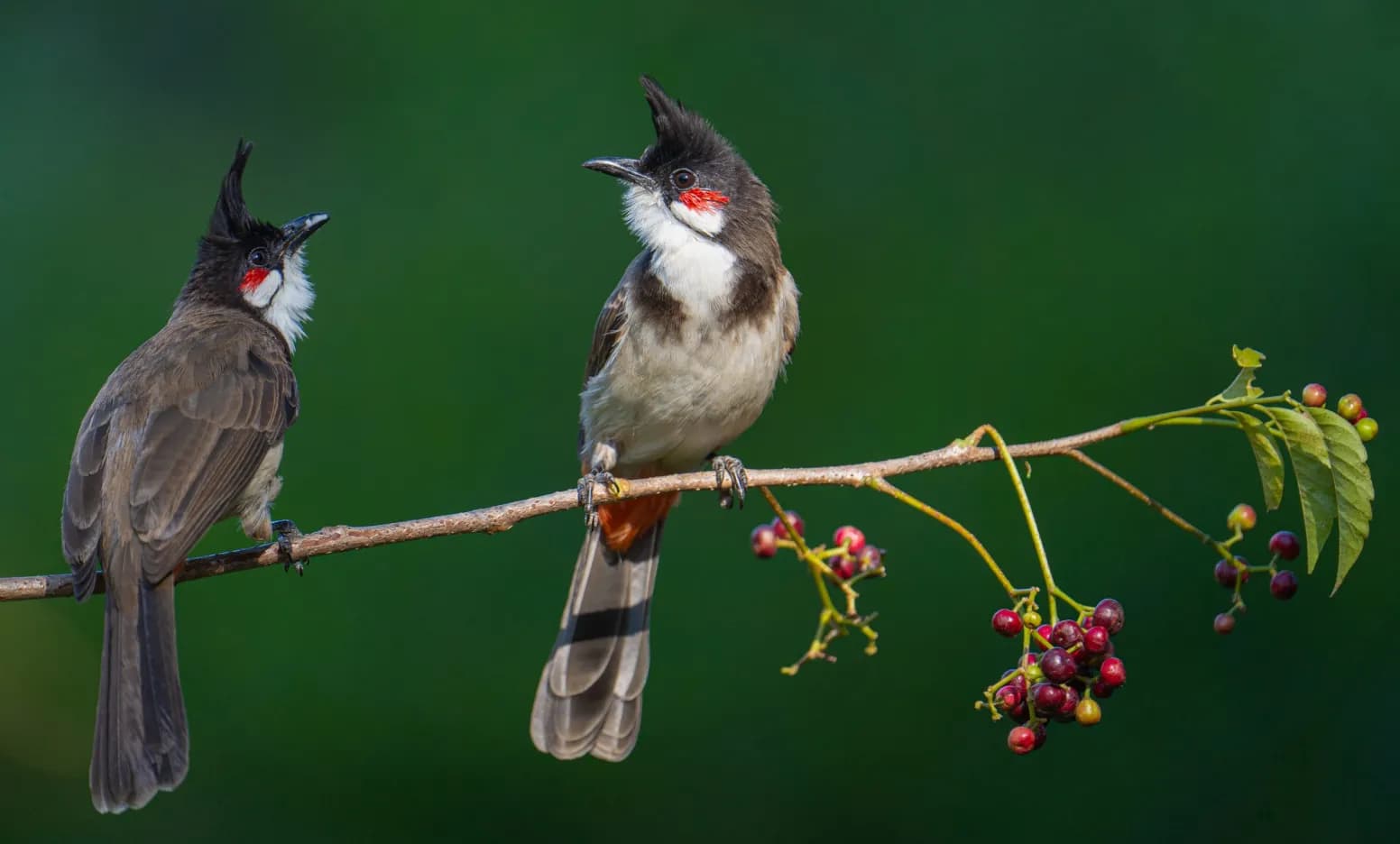Bulbul birds are songbirds with a wide range in the world, and there are 160 bulbul species. I am going to talk about 7 bulbul species in Cambodia today, and they are so adorable to look at. This is why many people also like to have them as pets; hence, them being captured for the pet trade. Let’s find out more about the 7 bulbul species in Cambodia below.
Black Bulbul (ពពិចខ្មៅ)
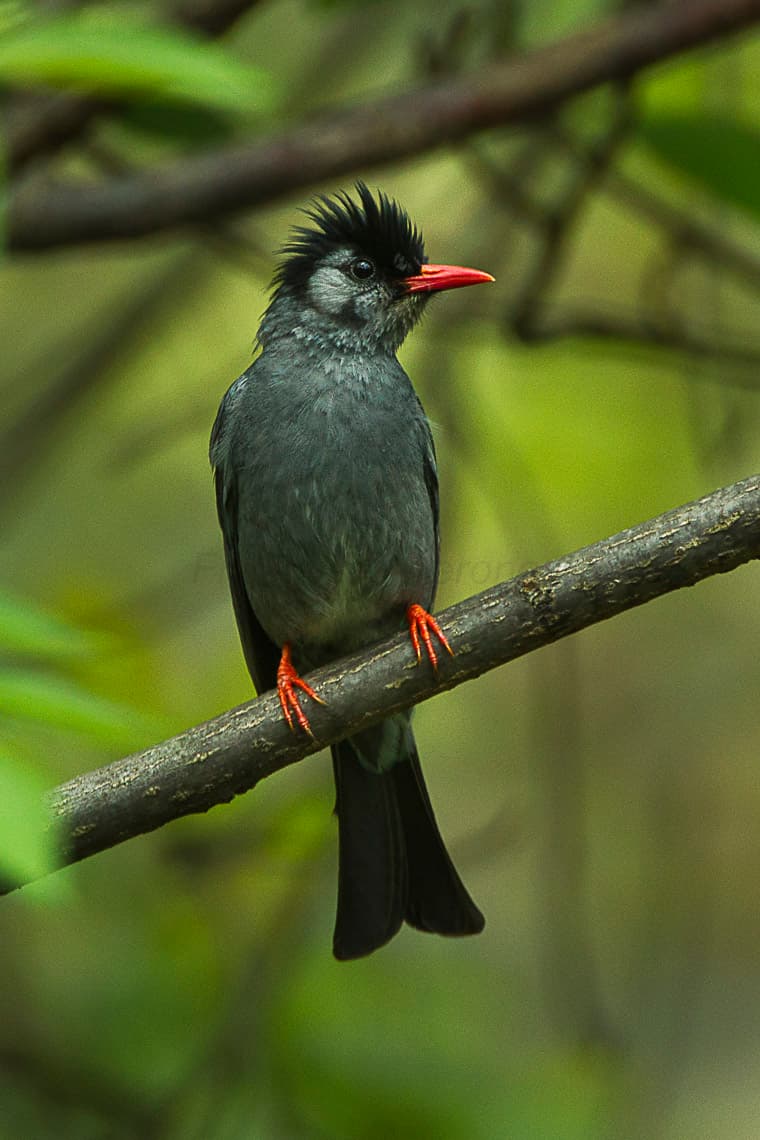
A black bulbul grows up to 25 centimeters, and it has a long tail. Its body plumage coloration ranges from slate grey to shimmering black, depending on where it comes from. And our rock metal black bulbul in Cambodia has a shimmering plumage and an awesome hairdo. The only bright parts of their bodies are their red beaks and feet. Their ideal habitats are broad-leaved forests, cultivation, evergreen, gardens, and tropical forests in hilly areas. They are quite noisy because they make a lot of various grating calls, loud cheeping, and mewing.
During the daytime, they spend their time feeding on berries, insects, nectar, and seeds and then roosting in small groups. The males and females will come together during the breeding season from April to July to build the nesting site. There are 2 to 3 or up to 5 eggs in a clutch, and the females incubate those eggs. The males stay near the nest and sing the entire day, and that’s pretty much it.
Black-Crested Bulbul (ពពិចក្បាលខ្មៅកំប៉ោយ)
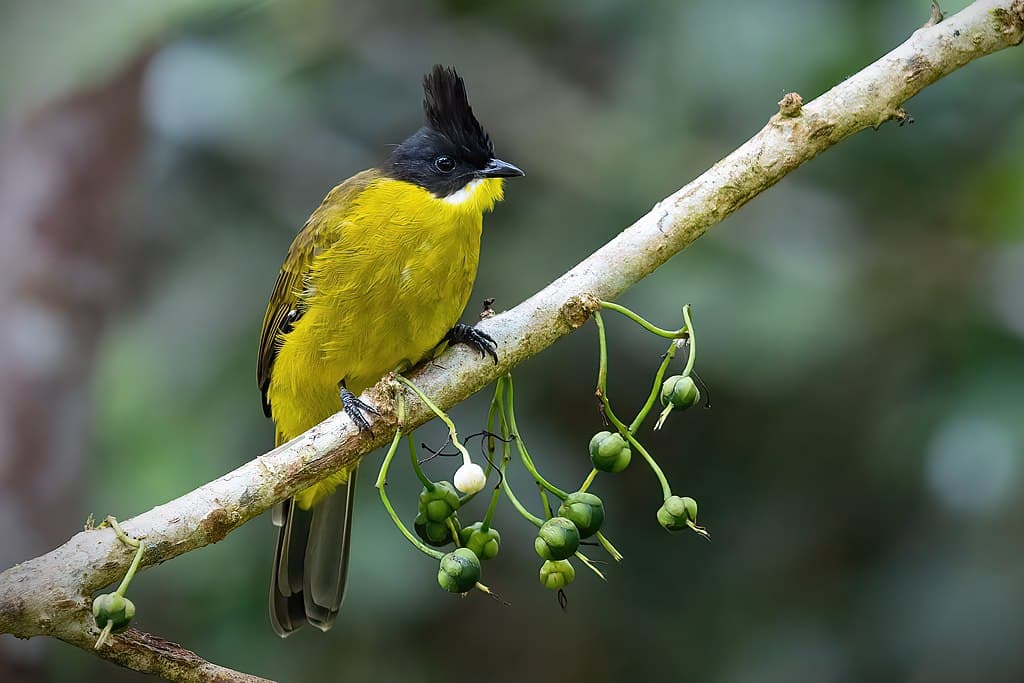
Having a better mohawk than the previous species, it is so easy to recognize a black-crested bulbul. This beautiful bulbul species has a black head while the rest of the body is different shades of yellow. If you are lucky, you will see them when hiking because they only live in dense scrubs and forests. Their habitat range also stretches to foothills, lowlands, and submontane regions where they feed on fruits, insects, and small vertebrates. What’s interesting about them is that they feed on “yellow oleander” which is a toxic fruit to mammals. However, it is not toxic to them and the birds themselves are also free from toxins.
The black-crested bulbuls are active and loud birds that are so energetic, and they can cause damage to orchards. Generally, black-crested bulbuls live in holes dug in ancient homes, meadows, roofs, shrubs, and trees. When the breeding season comes, they build their nest in a shrub for 2 to 4 eggs. Both males and females take care of the eggs before they hatch in about 16 days. In some countries, this cute bird even represents longevity and a long happy marriage.
Puff-Throated Bulbul (ពពិចបំពង់កសទ្រូងលឿងចាស់)
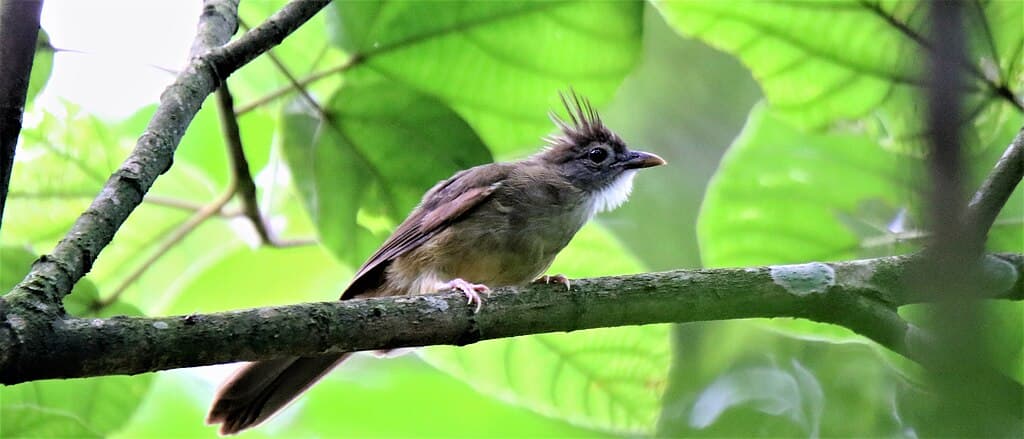
Found in Southeast Asia, the puff-throated bulbul has olive upperparts, yellow underparts, and puffy white throat feathers. They are most common in Cambodia, Indochina, Laos, Myanmar, Thailand, and Vietnam where they inhabit broad-leaved evergreen forests and open woodlands. Usually, they feed on berries and nectar as well as insects such as cicadas and more. Puff-throated bulbuls come together during the breeding season from February to July. They breed cooperatively by helping each other in building the nests, incubating, and feeding the young. Females lay 2-3 eggs that take 12-13 days to incubate before the chicks fledge 10-11 days after hatching.
Red-Whiskered Bulbul (ពពិចត្រចៀកក្រហមស)
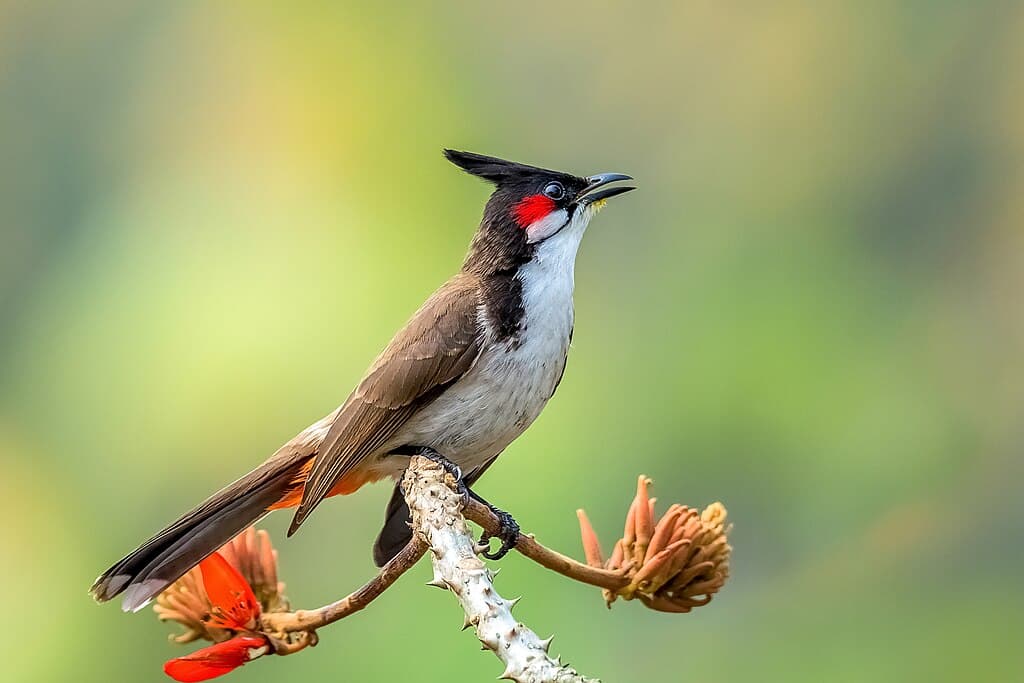
The name says it all, a red-whiskered bulbul has a red patch under each of its eyes. This bird grows up to 20 centimeters, it has brown upperparts and whitish underparts along with a tall pointed crest. Native to Asia, the red-whiskered bulbuls live in farmlands, lightly wooded areas, open countries with bushes and shrubs, and wetlands. Their population is also not spread to Australia, parts of Asia, and the United States as well. Their diet consists of berries, fruits, insects, and seeds while juveniles feed on small insects like caterpillars.
This is one of the bulbul species that people like to have as pets because they are easy to tame. Native people like them because they are calm and fearless, and they can be trained to sit on the hand too. This is why they are popular cage birds in various parts of Southeast Asia.
Sooty-Headed Bulbul (ពពិចក្បាលខ្មៅចុងខ្នងស)
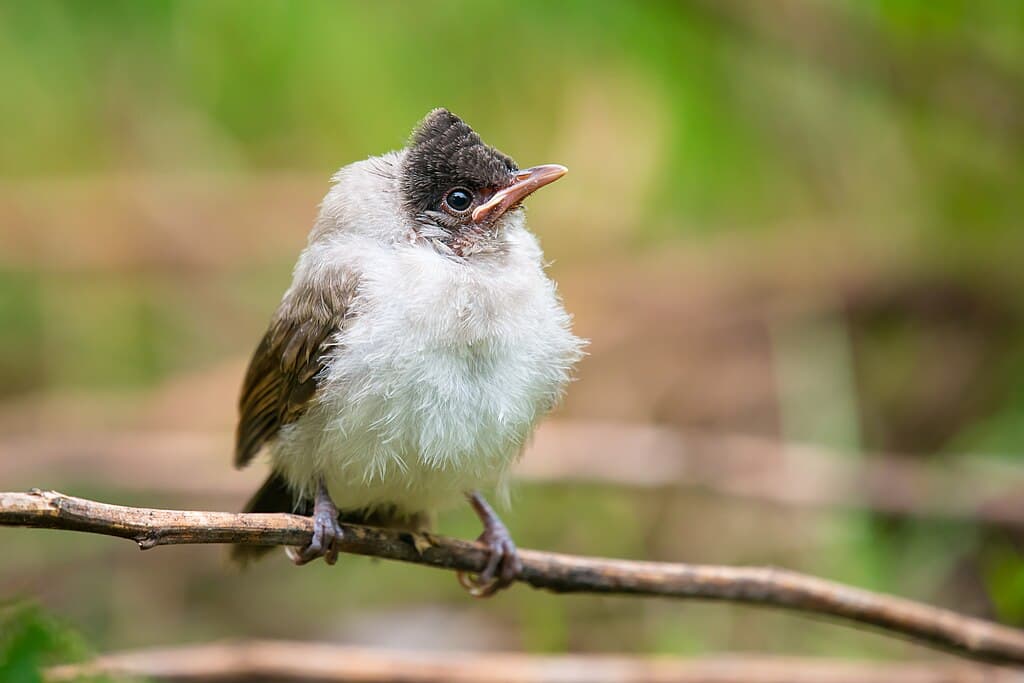
A sooty-headed bulbul is a medium-sized songbird that grows up to 21 centimeters, and it has a short crest. The head of the bird is black, and upperparts are light brown while the underparts are white with orange-red vent. These birds are found in Asia and Southeast Asia, mostly in open wooded areas, and subtropical or tropical moist lowland forests. The information about their behavior and what they eat are not available, I guess perhaps they are not widely known.
Streak-Eared Bulbul (ពពិចត្រចៀកឆ្នូត)
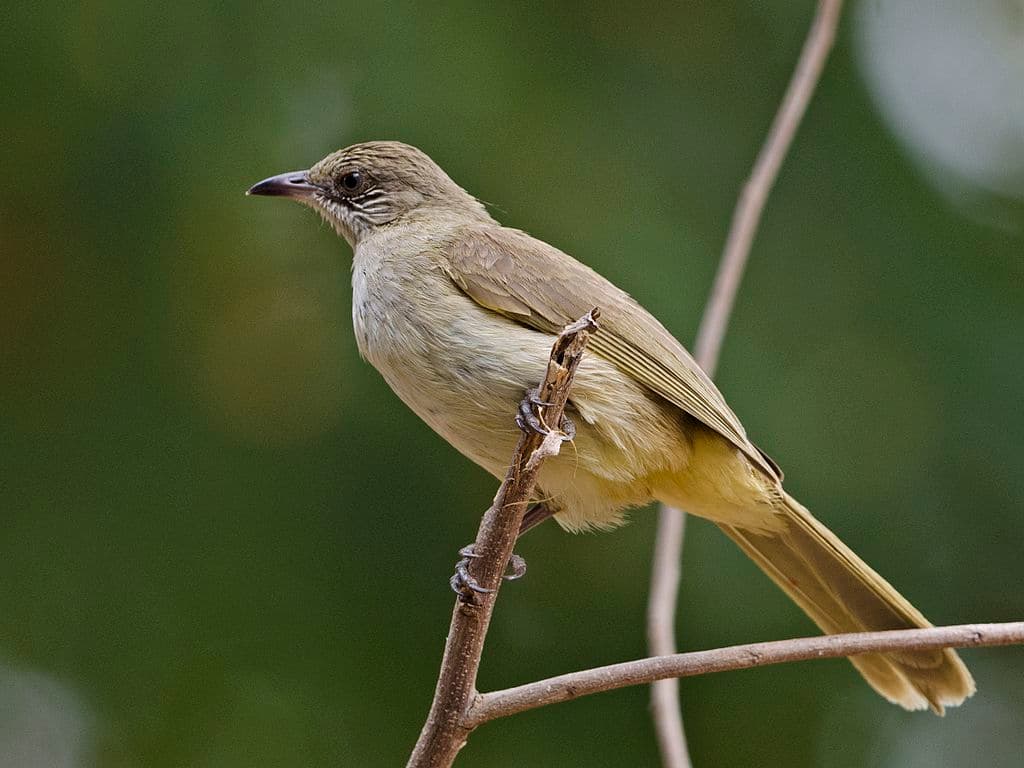
The streaked-eared bulbuls are medium-sized birds that grow up to 17 to 19 centimeters. Things are the same with this bulbul species, the information about this bird is very little. All I could find is that they inhabit subtropical or tropical moist lowland forests. However, their population is a lot in Cambodia as you can find them anywhere. Streak-eared bulbul is also one of the common and widespread bird species that live in man-man environments, including Phnom Penh. Both in the cities and in nature, these birds feed on fruits and insects that they can find. Its breeding season is from January to September, and the females lay 2 to 3 eggs in a clutch.
Stripe-Throated Bulbul (ពពិចពុកមាត់លឿង)
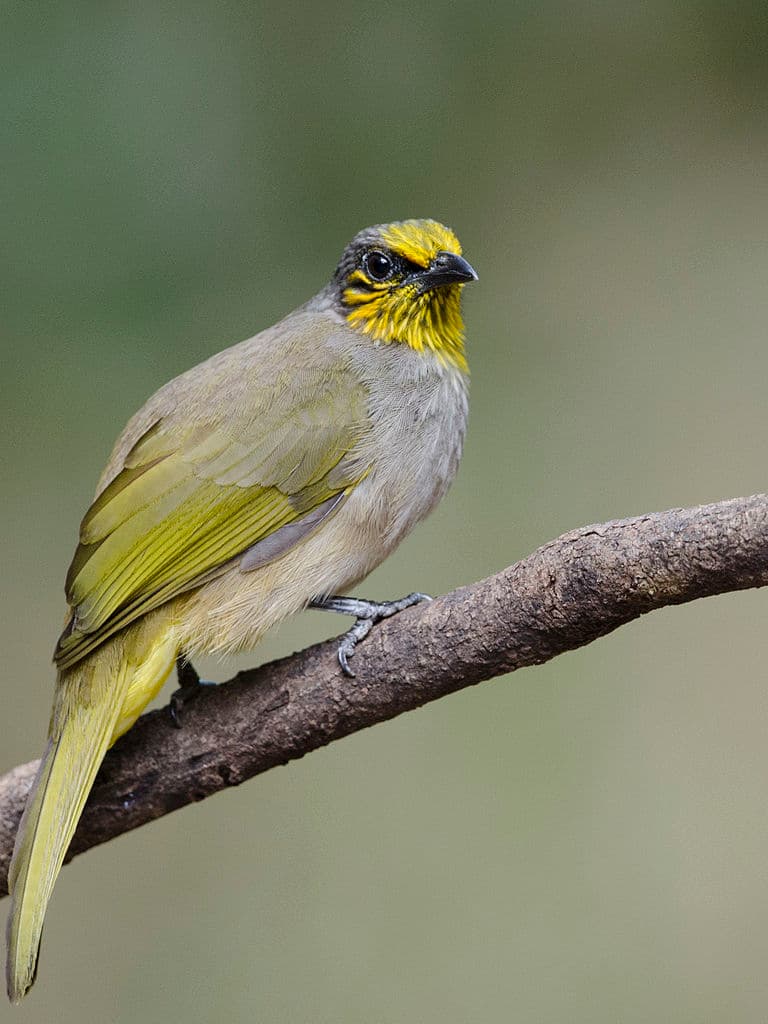
Last but not least, we have the striped-throated bulbuls that are found in various parts of Southeast Asia. This bulbul species can grow up to 20 centimeters, and its distinctive feature is the bold yellow streaks. Those streaks are the brightest on their throat and upper breast, and they are also visible on the ear coverts and forehead. Their natural habitats include tropical moist lowland forests and tropical moist montane forests as well as clearings, gardens, secondary forests, scrublands, and thickets. As omnivores, striped-throated bulbuls feed on berries, fruits, and insects they can find both on the wing and on the ground.
Related Post: Thrush Bird Species In Cambodia
